The word "velvet" brings to mind luxury and elegance. But not only that. Velvet leather, velvet handles also come to mind, i.e. something incredibly pleasant to the touch. It is also known that this is an incredibly expensive material. Is there another fabric similar to velvet?
Types of velvet fabrics and their application
Velvet is a fabric with a dense vertical pile on the front side of the material. Initially, it was made of silk. The unique material was very dense and durable, retaining its properties for many years.

The properties of velvet fabric are unique:
- high hygroscopicity, perfectly absorbs and retains moisture;
- does not cause allergies;
- not susceptible to attack by insect pests;
- looks luxurious on the outside;
- excellent for drapery.
Note!The technology of making the fabric is very labor-intensive: two layers of a smooth base are joined in pairs using a special weave - loop. Then this two-layer fabric is cut into two parts with a sharp blade, two separate canvases. Each has a smooth back and a fleecy front side.
The combination of silk and velvet gives a single-color coloring of the material. To obtain patterns and relief, the fabric is processed and finished:
- embossing;
- embroidery;
- patterned weaving;
- by pressing;
- etching.

The history of velvet is fascinating. It appeared in China, the birthplace of silk. Then its traces were found in Byzantium. In the Middle Ages, Venetian textile workers united and formed the Velvet Guild. After that, the luxurious material appeared in Rus', via the northern trade route. It was brought by German merchants, so the name stuck, consonant with the German word "Barchent".
The most expensive types of velvet are made from silk. Manufacturers, trying to make the material cheaper and more accessible to the buyer, have developed fabrics that include cheaper fibers - cotton, viscose, wool, synthetics.
There are several varieties depending on the composition of the fabric:
- Cotton velvet is made from 100% cotton. Cotton velvet is breathable despite its high density. The naturalness of the material is used in the production of children's clothes. The result is warm, high-quality clothes in which the child does not sweat. When lycra is added to the composition, its durability increases.
- Paper velvet (other names - plush, Manchester) - cotton velvet, which contains cotton fibers. The fabric is very thin and light, with a small pile. Suitable for all types of clothing.
- Silk velvet is traditional, made from silk fiber. It is from this luxurious material that clergymen's clothing is sewn.
- Pombarkhat is a velvet material on a mesh, such as chiffon, with elegant patterns.
Important information! Moire is a fabric with pronounced iridescence on the front side. The combination "moire velvet" means velvet with patterns obtained by the play of light.
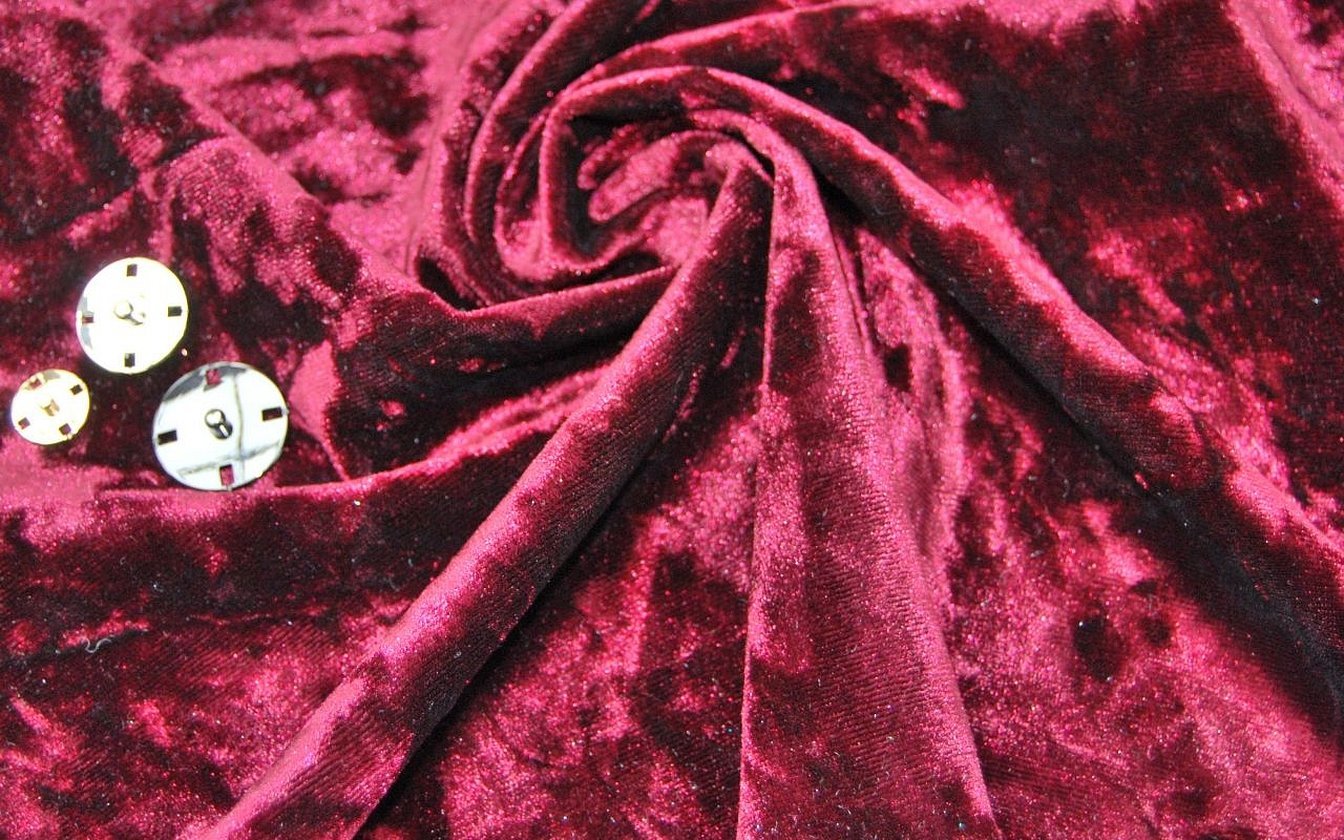
The material panvelvet, which is consonant in name, what kind of fabric is it? It is a special kind of velvet, but with a glossy pile pattern on a smooth base. The panvelvet fabric itself is thin, but due to the relief of the pattern it looks voluminous. The patterns are mainly made of plants - flowers, berries, vines, various leaves.
Like velvet, “classic” traditional panne velvet is made from silk, but there are also various percentage combinations of silk, viscose, wool, and polyester.
Important information! A special non-flammable velvet is used for theatrical decorations, curtains, and upholstery of public places. It does not support combustion and does not allow fire to spread. Its fire-safe properties are provided by the polyester fiber included in the material. At high temperatures, it does not emit toxic combustion products, which helps to avoid mass casualties.
What fabrics might appear similar to velvet?
Since silk-based velvet is an expensive material, manufacturers tried to make production cheaper by adding other, cheaper fibers to the composition. They tried to make a fabric simpler than velvet.
Artificial suede is a fabric, cotton or silk, velvety on the front side. Villi obtained from microfiber or polyester are glued to the base. It holds the shape of the fabric and prevents deformation. It is used for clothing and shoes.
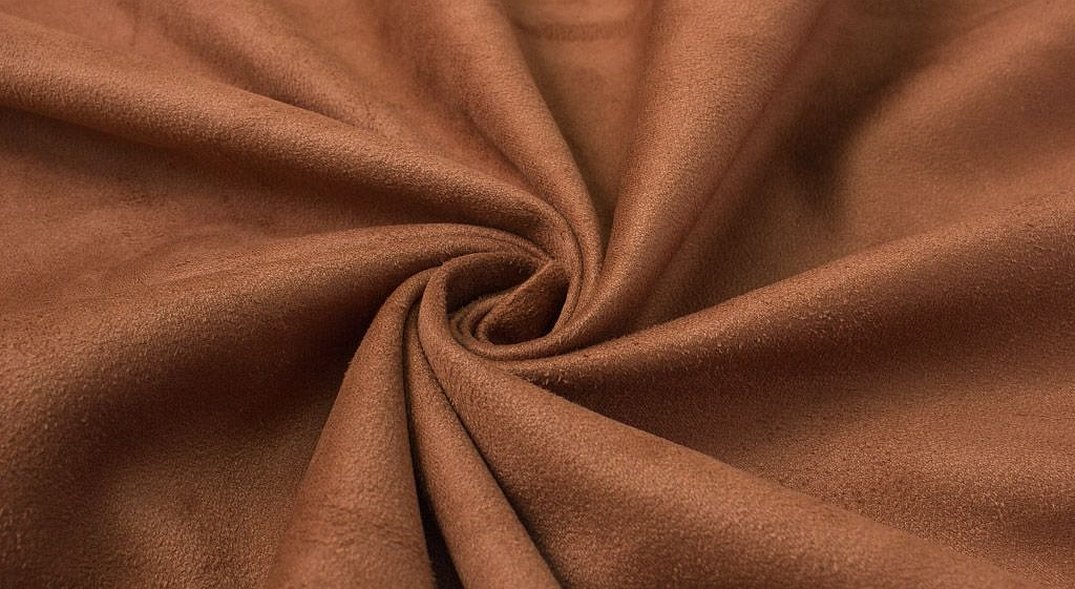
Velvet is a cotton-based fabric with a fairly thick pile and ribs on the front side. The famous "velvet trousers" are wear-resistant, long-lasting, and elegant.
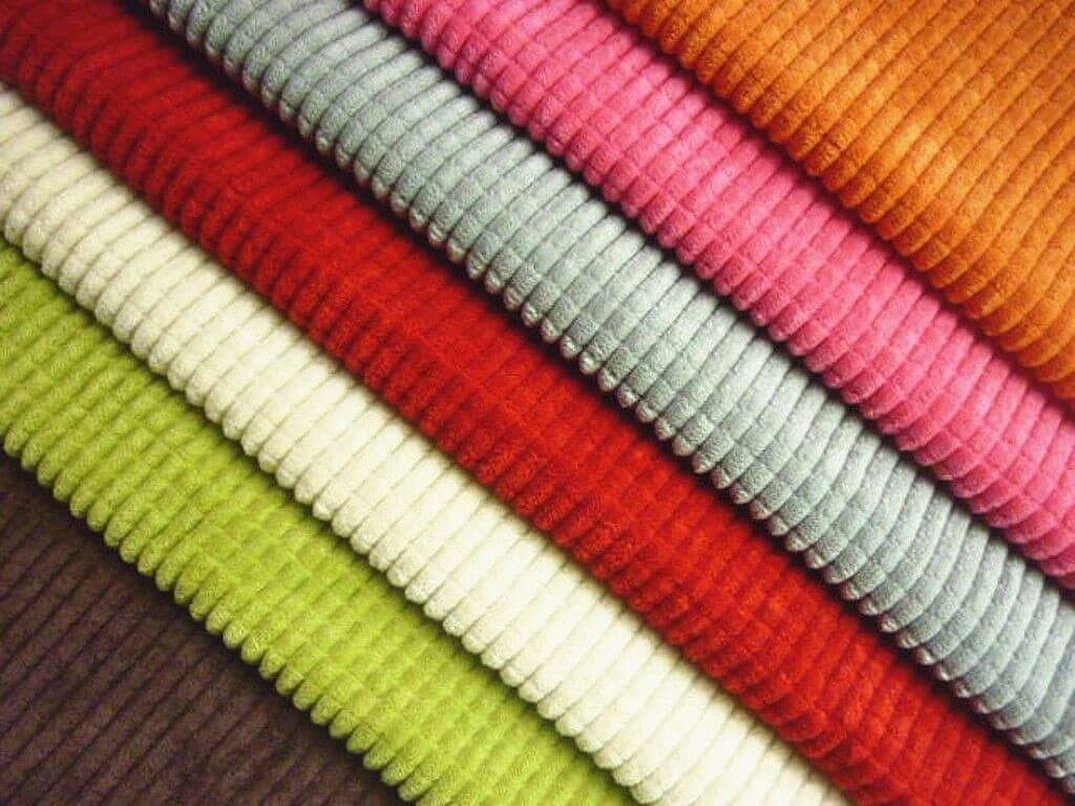
Chenille is very popular in furniture upholstery. It is velvety to the touch, woven and extremely durable. The velvety feel is achieved by winding fluffy combed fibers onto a main thread.
Chenille got its name in France. Translated from French, this word means "caterpillar". The thread with wound fibers looks exactly like a caterpillar.

Please note! Often in crosswords there is a question "fabric simpler than velvet, 4 letters". The answer, in addition to plush, can be the following materials, similar to velvet in appearance.
Trip is a woolen variety that is widely used for sewing carnival costumes.

Plush - of all the analogues of velvet, it has the longest and thickest pile, soft to the touch. Usually the pile is smoothed on one side with special brushes. The most popular direction in its use is soft toys.
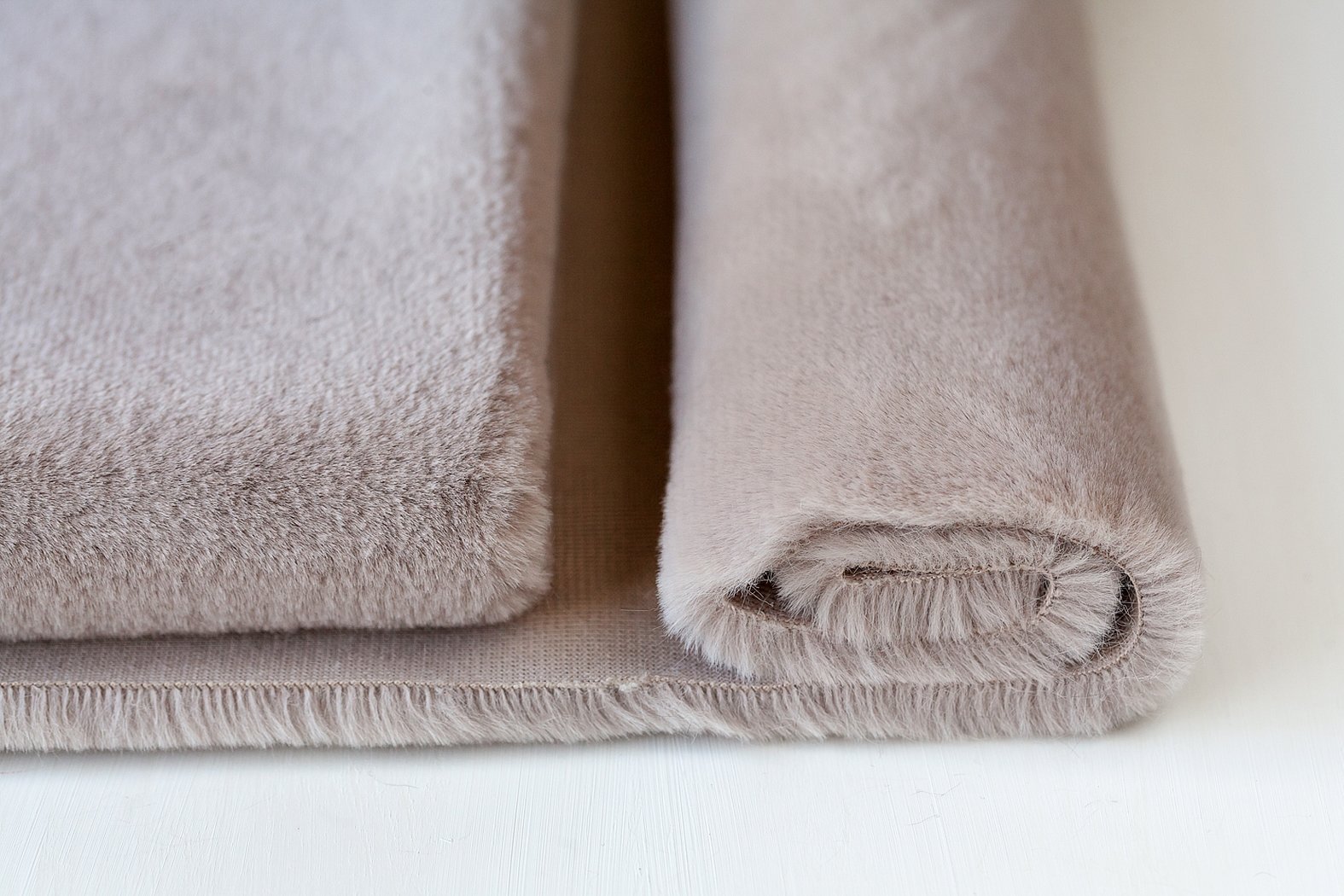
Flock is a pile fabric similar to velvet. It has a short pile on the front side. It is made of viscose, polyester, and acrylic. The production stages include cutting the pile, dyeing it, and processing the pile. Then the pile is attached to the base strictly vertically and secured with a special compound. It is widely used for upholstery, car interiors, making toys, and home textiles.
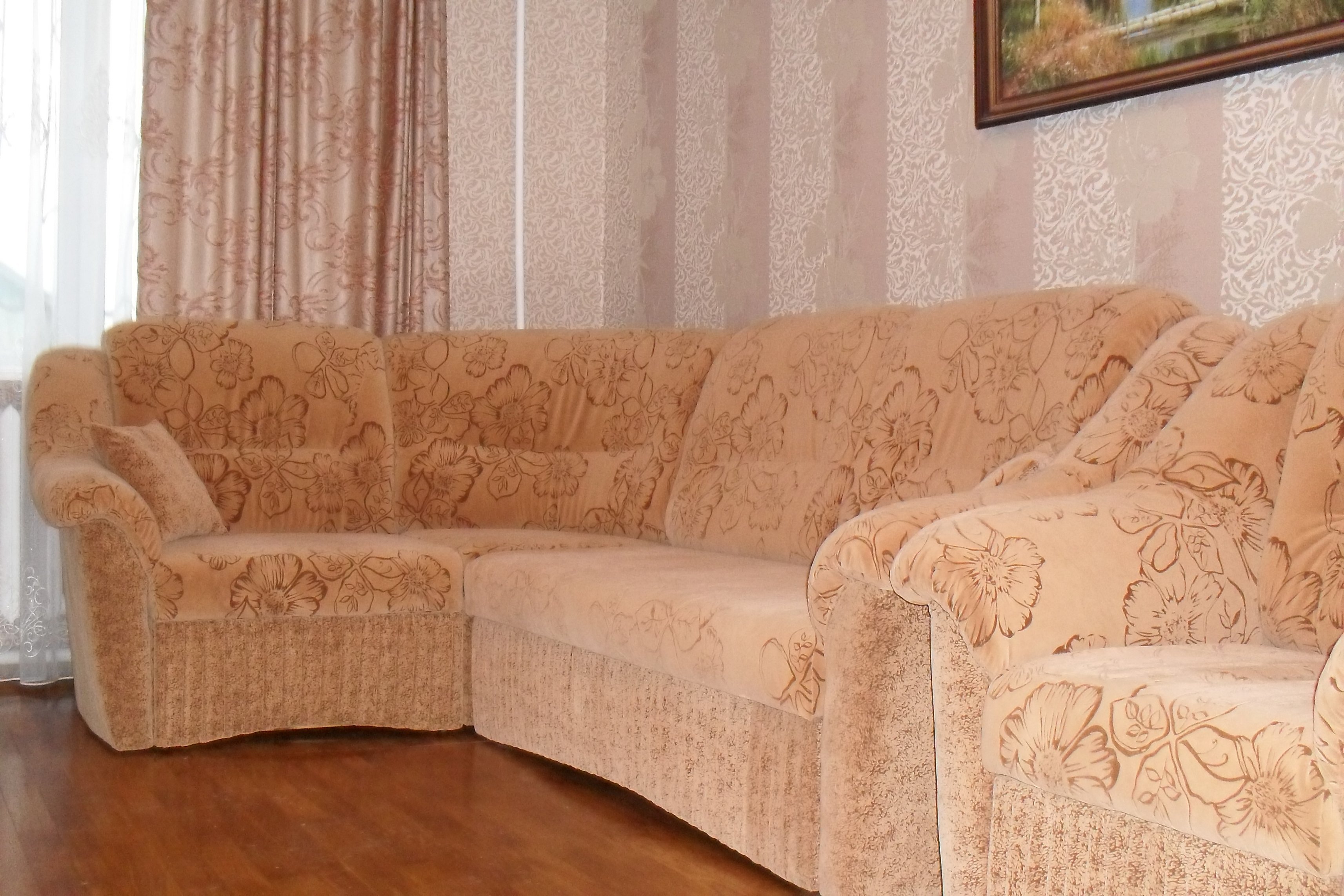
Stretch - contains elastane, which allows it to stretch and fit the figure beautifully.

The most famous and related material to velvet is velour.
What is the difference between velour and velvet
Despite some external similarity of these materials, it is wrong to consider them identical. The difference is not only in the name. There are several differences:
| differences | velours | velvet |
| fabric composition | wool, cotton, blended | silk |
| pile length | long | short |
| origin of the material | artificial | natural |
| sensations when touching the material | soft to the touch | dense |
Important! Velour is also the name of a type of leather. The second name is chrome suede. The material is obtained from the skins of cattle or pigs. The raw material is a skin with defects on the front surface, therefore, in products made from such material, the back of the skin is made the front side, which is carefully sanded. The result is a thick, single-color pile. It is used for sewing jackets, belts, shoes.
The scope of application of these fabrics is also varied.
Velour is used to sew children's clothing, home suits, sportswear, and cozy pajamas. Velour is used to sew dresses. Soft chairs and sofas are upholstered with special furniture velour. Car velour is used for seat covers, which have excellent abrasion resistance. Velour covers are not slippery, and have a rather respectable appearance. Jacquard velour (fabric with a double-sided pattern) is used for elite bed linen.
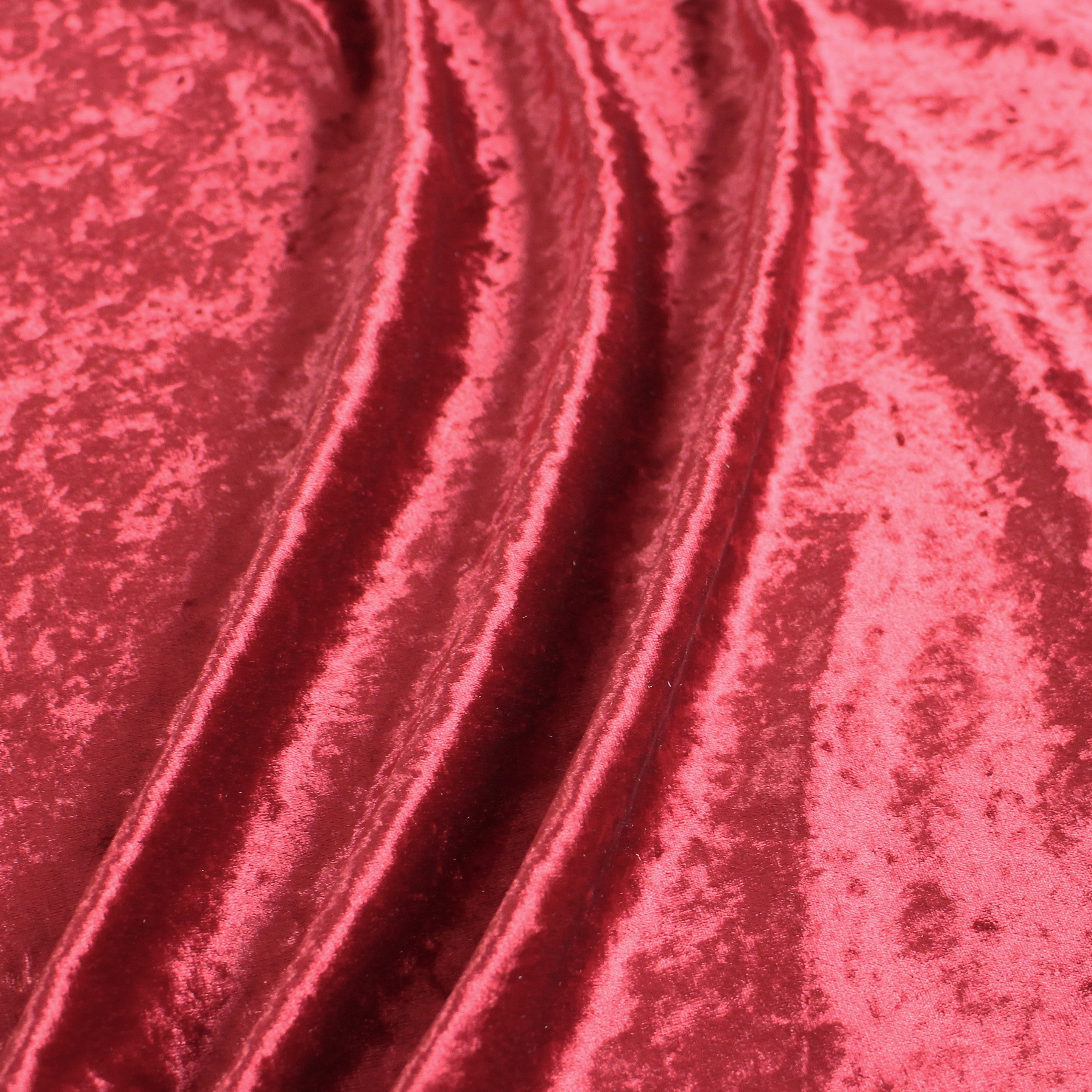
Velvet is more appreciated by lovers of luxury. Fluffy dresses worthy of royalty, skirts, suits. Shoes are also not left without velvet - sandals, shoes are decorated with velvet details. Velvet accessories - bags, clutches, headbands, complete the "velvet" luxurious image. Theatrical costumes and scenery are made.
They look similar, but you can find the differences by touching the fabrics. Velvet is relatively hard, and if you crumple it, there will be creases. Velour is softer and straightens out quickly.
Fabrics have advantages and disadvantages.
| Characteristics | Velvet | Velours |
| advantages | Does not cause allergies or irritations | Keeps heat well |
| Noble appearance, shimmer and shine | Budget price | |
| Doesn't stretch | The fabric is breathable | |
| Keeps heat well | Does not stretch or wrinkle | |
| Long lasting color | Pleasant sensations | |
| flaws | Creates a volume effect | Gets dirty easily |
| Requires careful maintenance | Requires careful maintenance | |
| High price |
Fabric care
Velvet fabric, despite its luxury, is very capricious and demanding in care. It requires regular cleaning, as it attracts dust and pet hair to the pile like a magnet.
Important! Velour is not so capricious, but it also needs cleaning. It is recommended to remove dirt with a damp cloth.
Washing is allowed only in a delicate mode, the temperature is not higher than 30°C. Do not use bleaches and conditioners - they will only cause harm. Do not wring them out, otherwise they will deform. They must be wrung out and hung to dry. For drying, you can use a hair dryer, hanging the clothes on hangers. But drying with an iron is strictly prohibited. The sun is contraindicated - the material can lose color and fade.
Ironing napped fabrics is prohibited. If you need to smooth out creases, it is better to steam the item.

Velvet can be called a symbol of a prosperous life, even wealth. But the use of its analogues does not indicate a low income. On the contrary, it indicates the good taste of the owner, who knows how to appreciate truly high-quality things not for their price, but for their merits.




